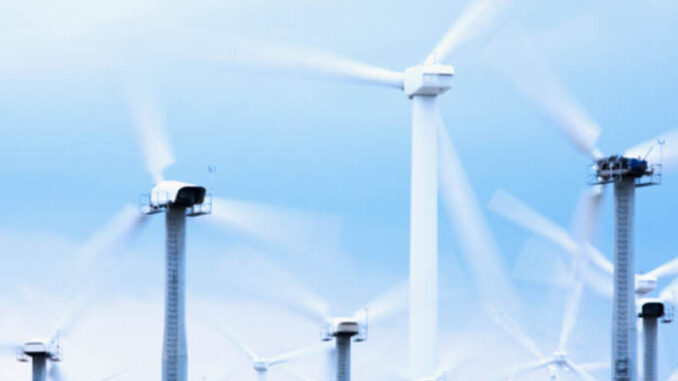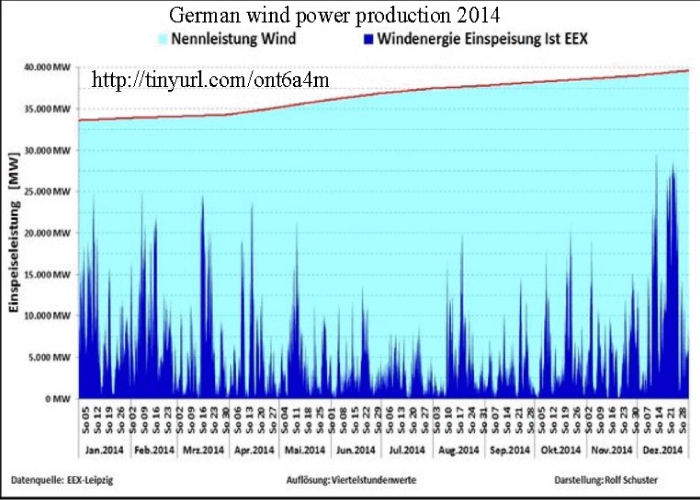
Germany is a leader in electricity production from wind turbines. In 2014, Germany had 25,000 wind turbines installed. Their total installed capacity rating is 39,612 MW. But as Pierre Gosselin reports, these turbines actually produced an average of only 5,868 MW or just 14.8% of rated capacity. Even wind turbine installations in the windy North Sea are delivering only 20% of rated capacity (see report here).
This story shows the folly of replacing fossil-fuel or nuclear generation of electricity with solar and wind. In Europe as a whole, infrastructure investment in renewable energy (wind, solar, biomass) has consumed 600 billion Euros with little to show for it except high electricity prices (Source).
In the graph below shows the intermittent nature of wind energy, the light blue area is the total generating capacity; the dark blue is actual electricity produced.
You can see the extreme volatility of wind power. Such volatility plays havoc with the electric grid and makes fossil fuel backup generation more expensive to run because it must constantly change production rate; it cannot be run efficiently. Those constant changes cause production of more emissions than would be produced without having to contend with the quirky wind power contribution.
Gosselin (a US citizen living in Germany, who received a Bachelor of Science in Mechanical Engineering at the University of Arizona) notes that “Resistance to wind power in Germany is snowballing.” “The turbines, which the German government says will become the ‘workhorse’ of the German power industry, ran at over 50% of their rated capacity only for 461 hours [out of a possible 8,766], or just 5.2% of the time.”
In addition to the unreliable power produced by allegedly “green” wind power, it is becoming increasingly obvious that wind generation is taking a large toll on wildlife and has deleterious effects on human health.
See: The effect of wind turbines on human health – “People who live near wind turbines complain of symptoms that include some combination of the following: difficulty sleeping, fatigue, depression, irritability, aggressiveness, cognitive dysfunction, chest pain/pressure, headaches, joint pain, skin irritations, nausea, dizziness, tinnitus, and stress. These symptoms have been attributed to the pressure (sound) waves that wind turbines generate in the form of noise and infrasound. <
Wind turbines versus wildlife – “The U.S. Fish and Wildlife Service (FWS) and American Bird Conservancy say wind turbines kill 440,000 bald and golden eagles, hawks, falcons, owls, cranes, egrets, geese and other birds every year in the United States, along with countless insect-eating bats.
Wind turbines killed 600000 bats last year

